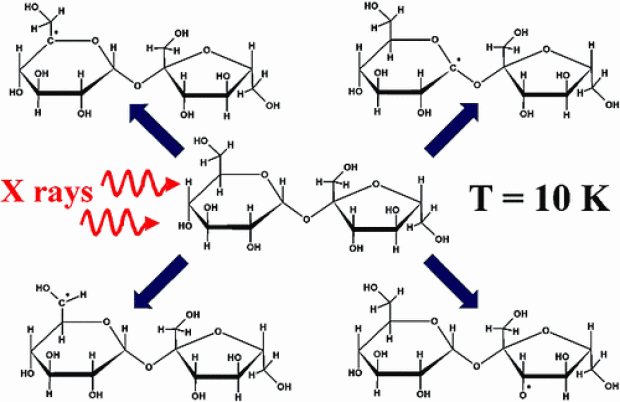
Abstract
Electron paramagnetic resonance (EPR), electron nuclear double resonance (ENDOR), and ENDOR-induced EPR (EIE) measurements on sucrose single crystals at 10 K after in situ X irradiation at this temperature reveal the presence of at least nine different radical species. Nine proton hyperfine coupling tensors were determined from ENDOR angular variations and assigned to six of these species (R1−R6) using EIE. Spectral simulations indicate that four of those (R1−R3 and R6) dominate the EPR absorption. Assisted by periodic density functional theory (DFT) calculations, R1 and R2 are identified as H-abstracted C1- and C5-centered radicals, R3 is tentatively assigned to an H-abstracted C6-centered radical, and R6 is identified as an alkoxy radical where the abstracted hydroxy proton has migrated to a neighboring OH group via intermolecular proton transfer. The latter radical had been characterized and identified in a previous study, but the present DFT calculations provide additional insight into its conformation and particular properties. This study provides the first step in unraveling the formation mechanism of the stable sucrose radicals detected after room-temperature irradiation and contributes to the understanding of the initial stages of radiation damage to solid-state carbohydrates.
